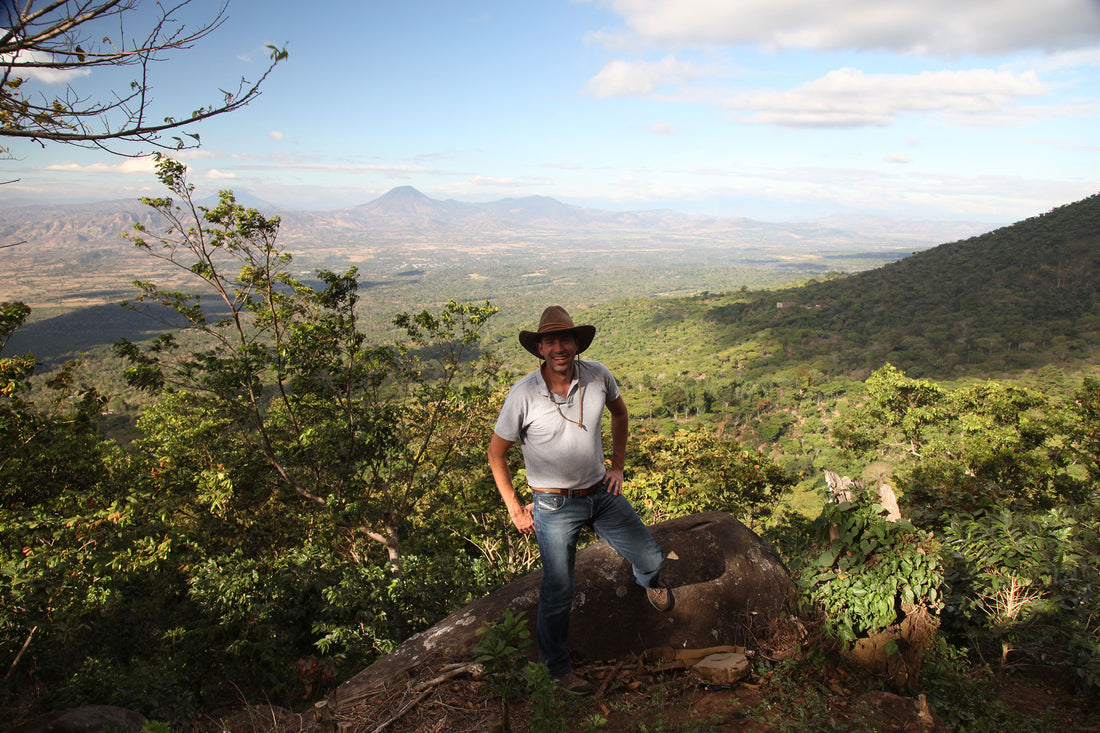
The Coffee Journey – Episode I
Share
How long it takes to get coffee?
So here’s a question for you. How long does it take for coffee to be available for
roasting? I am thinking about the whole time it takes for coffee to get to us…think of the process from “seed to cup” or more like “seed to drum” (as in the steel drum of Rosie the roaster).
Believe it or not, it takes a long time. At the farm, it takes nine to ten months for the cherries to ripen after the coffee bush has flowered. Then it takes another two or three weeks of processing depending on the method used at the coffee mill. Then, coffee is put to rest in jute bags to stabilize, a step called “reposo” in Spanish. Think of it as a nap, we all know how much Latin Americans love a good “siesta”, so why should coffee be left out.
Then samples are prepared, sent out, cupped and approved for shipment. This whole process of arranging for shipment and negotiating the coffee usually takes up another month. Finally, coffee is then transported from origin to destination which may take another two to three months depending on where the coffee is being shipped to.
So, I thought interesting to track the journey of coffee throughout this whole year in monthly installments beginning with this first one. I’ll begin with what is going on at the farm this moment and I’ll explain all activities done through the year until harvest. Then we’ll follow the processing and finally the shipment.

So, I’ll start by introducing the protagonist of the series. The protagonist is the coffee and the farm.
Thus, let’s chat about the farm. Our family farm is called Finca Argentina and it is located in El Salvador, Central America. It consists of 200 acres of land, of which 175 are planted with coffee. The remaining area is wooded area, steep ravines not suitable to plant coffee and an area that has a fumarole and the soil gets too hot for coffee to grow. I guess it is one of the downsides of those rich, volcanic soils.

The plantation ranges in elevation from 1,150 m.a.s.l. (meters above sea level) to 1,300 at its highest point. Some areas are steeper than others, but it is expected given that coffee tends to be grown in mountain ranges.

Harvest was completed last month and February usually begins our official first month of the new season. The 2023-2024 coffee season which will follow through this series. So far, we have reduced personnel from 70 collaborators to 27, which form our core team throughout the year and one that has been with our family farm for more than 10 years, some even longer. As of now, the farm has received no rain for two months and the trees are undergoing water stress. Don’t panic though, coffee trees are very resilient and is during this time that the coffee trees “prepare” for the harvest. Water stress is needed for the trees to produce cherries. Without the stress, there would be no cherries since the trees will feel no need to “reproduce”.

Ok. I think I have set the stage and I invite you to follow the journey of the coffee bean with me throughout this year. If there are any topics you would like to know more feel free to submit a request and I’ll happily provide an answer.
Brew-ya next week, fellow coffee connoisseur!,
Alejandro
